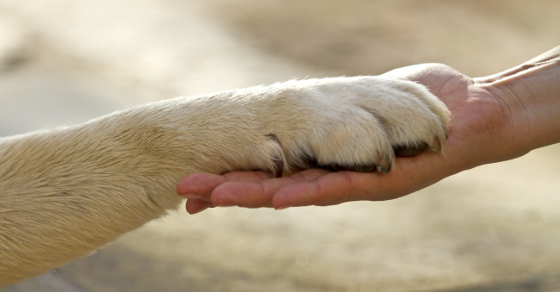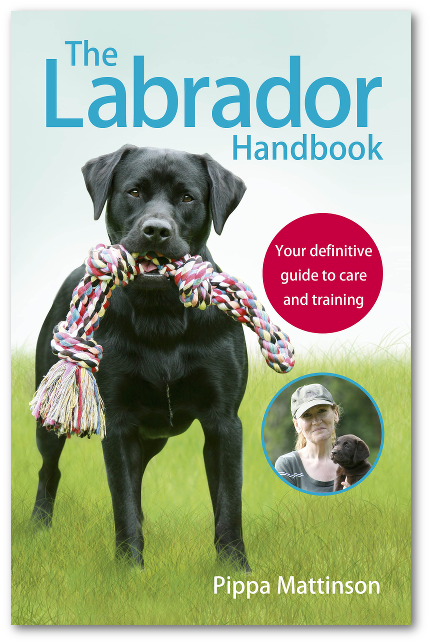Lab nails grow slowly and steadily throughout their lives, and most dog claws need clipping on occasion.
Your Labrador should have neat short nails. Once the claws begin to grow too long, you will notice that they have an effect on the dog’s feet. His toes will begin to splay apart slightly, which is uncomfortable for him, and make a noise if he walks on a hard floor.
The nails should not extend beyond the pad or scratch on the ground when he stands upright. If this goes on for too long, it can make walking painful.
Today I’ll share my tips for trimming your Lab’s nails. Having a fuss free nail clipping session, while lowering the risk of lengthwise nail splits or cutting the quick.
Do Lab nails have different growth rates?
Lab nails grow at different rates. Which is why your Labrador might need his nails clipping, whilst your friend’s Labrador’s nails stay short. Even dogs whose nails are subject to the same amount of wear and tear, may differ when it comes to nail growth.
I have a Lab whose nails grow very quickly. They need regular clipping unless she is really clocking up the miles each day. My other Labrador never needs her nails clipping. And this is really quite common.
Wear and tear
Because your Labrador’s nails are in regular contact with the ground, there is a certain amount of natural wear. The nails are gently ‘filed’ by rubbing on the ground. How effective this natural nail filing is, depends on where you exercise your dog and for how long. Walking on pavements for example will wear nails down more efficiently than running around on grass. For some dogs, this natural daily filing is all they ever need. But how do you know whether your dog needs his claws cutting?
Can you cut your Lab’s nails yourself?
You can certainly clip your dog’s nails yourself, but it is a great idea to get an experienced person to demonstrate the technique to you before going solo. Making a mistake is both messy, and painful for your dog.
You only want to cut the dead end of the nail, and not the nerve and blood supply. In a dog with clear nails, you can see the ‘quick’ quite easily. But it can be a little tricky in a dog with dark nails.
Which nail clippers should you buy for your Labrador?
There are different styles of clipper. I prefer the scissor action type like the Professional Dog Nail Clippers for Medium To Large Dogs(paid link), which I use for my Labs. Other’s prefer the guillotine action of the Wahl Smartgroom Dog Claw Clipper(paid link) for example.
It really is a matter of personal preference and which style you feel most confident and comfortable with.
How do you cut your dog’s nails
Ask your dog to sit or sit next to them on the floor. Lift the paw and carefully cut tiny slivers at a time. Be especially cautious if your Lab has dark nails. And have a file handy to remove any rough edges.
This works well if your dog doesn’t mind having their paws touched. If they are uncomfortable with this you’ll need to get your veterinarian or a dog groomer to trim them while you work on training.
Training your dog to accept nail clipping
Training a dog to lie quietly whilst you clip his nails does not take very long, and it is well worth the effort. In order to change the dog’s attitude to nail clipping you need to associate the process with something very pleasurable. This needs to be done in stages, only moving on to the next stage when the dog is comfortable with the previous one.
First build a positive association with having their paws touched. Start by treat streaming tasty bits of sausage or roast chicken while you gently touch the paw on the floor.
Over the course of a few training sessions, start to hold and then lift the paw whilst you continue to reward them. Don’t move on to something more challenging for your dog to cope with until they are completely comfortable.
You’ll need a friend to help you. And some tasty treats that your dog really enjoys. A little counter-conditioning completely changes this dog’s attitude towards having his nails cut. You might even find they are open to a splash of polish when you’ve finished their training!
The Labrador Site Founder
Pippa Mattinson is the best selling author of The Happy Puppy Handbook, the Labrador Handbook, Choosing The Perfect Puppy, and Total Recall.
She is also the founder of the Gundog Trust and the Dogsnet Online Training Program
Pippa's online training courses were launched in 2019 and you can find the latest course dates on the Dogsnet website



















My 11 year old Chocolate Lab Claws got so long ,she couldn’t make it up her doggy ramp without slipping .
I can’t get her into the van anymore to the groomer .
So today 2/05/15 I decided to use both my hands to press down on the professional large dog clippers.
I cut off the curve about 3/4 inch .
I did it very fast while she set on the floor, and I with difficulty set on a low Ottoman.
We where both relieved when it was over . A nice treat , and dress rehearsal on the ramp worked great .
Wow, now I can breath again till next time.❤️❤️❤️
My lab is a little over a year old. I want to know why my girl smells 2or 3 days after her bath. She kind of smells like vomit in a way. It always happens about 2 days after her bath. I have even tried to spray her with dog perfume and that don’t help. She stays inside so the smell is becoming a problem. What can I do to get rid of the smell.
is it her food? I am a lab owner of two great labs and alot of our friends have labs as well. Our dogs don’t smell but I would notice that they would shed more when we tried a certain brand of dog food. Once we switched to Diamond brand dog food they stayed full longer and didn’t stink. One of our close friends also mentioned that when he had his Lab on Pro Plan by purina it made her small badly so he switched her to Diamond and she stopped stinking.
I also use an Organic shampoo purchased at Petsense and it makes our labs smell delicious for two weeks (our labs are half inside/ half outside)
Hope this helps.